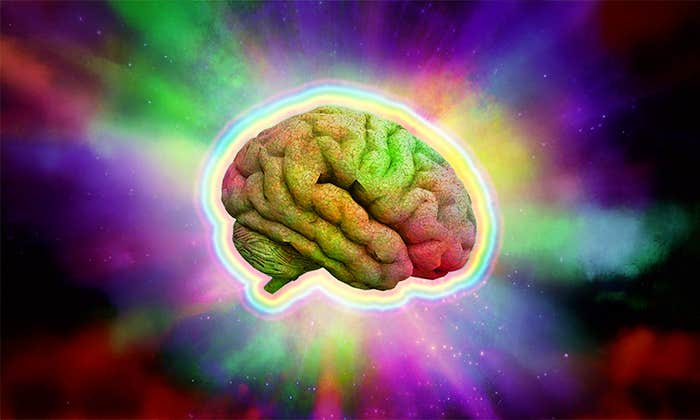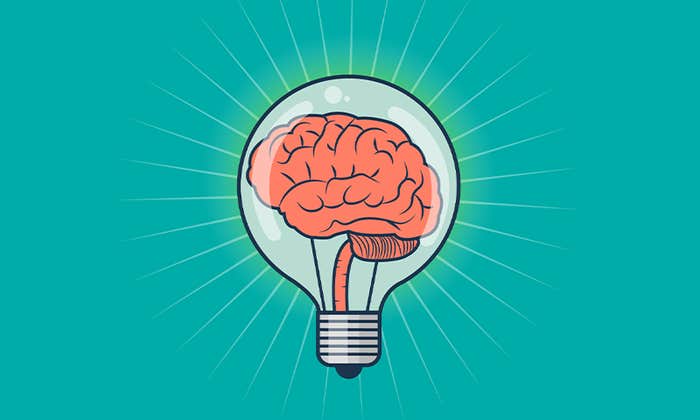When Leonid Moroz, a gregarious Russian-born neuroscientist and geneticist at the University of Florida, began studying ctenophores nearly a decade ago, he had a fairly simple goal in mind. He wanted to determine exactly where the blobby marine creatures—which are more commonly known as comb jellies because of the comb-like projections they use to swim—belonged on the tree of life.
After spending several years sequencing ctenophores, Moroz and his team discovered that the animals were missing many of the genes found in the nervous system of other animals thought to be closely related, such as coral and actual jellyfish. That meant that they’d branched off on their own up to 550 million years ago and were potentially among the first animals on earth.

“It was quite surprising to see,” said Moroz, almost like stumbling on a group of aliens living in the sea. But Moroz’s research did more than just shake up the tree of life. The ctenophores’ nervous system, Moroz realized, was formed using different chemical language than any other creature’s—not just different words but a unique alphabet. Moroz also discovered that comb jellies can regenerate elementary brains.
Today, these discoveries hold the tantalizing possibility that there might be alternative ways to build, or rebuild, a brain. Exploring these alternate systems could ultimately lead to revolutionary new treatments for degenerative neurological conditions, from Parkinson’s and Alzheimer’s to basic age-related memory loss, which affects nearly half of people aged 65 or older. By studying comb jellies, scientists might learn how to regenerate neurons, circuits, and even whole brains, helping not only address the problems of aging but also improving our capacity to learn.
Moroz’s accidental discovery was not the first time the course of neuroscience was changed because someone was poking around in the brains of simple sea animals. That honor belongs to Austrian-American neuropsychiatrist Eric Kandel. In the 1930s, when Kandel was a boy, he and his Jewish family fled Vienna for Brooklyn, New York. When Kandel enrolled at Harvard University in the late 1940s, just as the full scope of Nazi atrocities was becoming known, he majored in modern European history and literature, and focused on the attitude toward Nazism by German writers. Kandel’s girlfriend introduced him to Freud, whose work “opened an unsurpassed view” into memory and cognition, perception and thought.
At the time, learning how human memory works by studying a sea slug seemed farfetched.
After Harvard, Kandel went to medical school and did his residency in psychiatry. He took an elective on brain science, which introduced him to hands-on work in a neurobiology lab—one of only a handful of such labs that existed in the early 1950s. Later, while working at a National Institutes of Health lab, he learned how to record signals from individual nerve cells in the hippocampus, a part of the brain that scientists had recently determined was important for memory. It was highly specialized work, but it left Kandel yearning for something more. “When we finished,” Kandel said, “we asked, ‘What did we learn about memory?’ ” The answer, it turned out, was “nothing.” “You have to see how behavior is modified by learning,” Kandel said. “No one knew the nature of the sensory inputs.”
Kandel decided that if he was to have any success, he needed to study something far simpler than the human brain. He settled on a group of sea slugs in the genus Aplysia that are famous for having some of the largest nerve cells in the world—so big, in fact, that you can see them without a microscope. Another advantage of working with sea slugs is that they have a fairly limited number of nerve cells, only around 20,000 in total, as compared to the estimated 100 billion or so in humans. Those cells are distributed in just 10 clusters of neurons, called ganglia, which told Kandel that the number of cells responsible for any given behavior would be small.
Only two researchers in the world were studying Aplysia at that time, and both lived in France. Kandel decided to collaborate with Ladislav Tauc, a Czechoslovakian neuroscientist living in Paris, mainly due to Kandel’s wife’s fondness for the French capital. He ended up spending 16 months in Tauc’s lab.
At the time, learning how human memory works by studying a sea slug seemed farfetched. “There was a strong sense among brain scientists that mammalian brains differed radically from those of lower vertebrates, such as fish and frogs,” Kandel wrote in a 2006 Scientific American Mind essay. But he was not dissuaded. In the 1970s, Kandel’s work with Aplysia led to the discovery that creating short-term memories results in temporary changes in the connections between nerve cells, whereas long-term memory causes lasting anatomical changes in the brain. Or as he likes to put it to friends and reporters, “If you remember anything about this conversation, you will have a different brain than you started out with before the conversation.”
In 2000, Kandel shared the Nobel Prize in Physiology or Medicine for his work on the molecular basis of memory storage. Today, at 87, he runs a lab and two brain science institutes at Columbia University in New York City. “There are so many problems we don’t understand in the brain,” Kandel said.
Today, both Kandel and Moroz continue to work with Aplysia, often in collaboration. Recently, Moroz’s lab, along with Kandel’s lab at Columbia University, and the Broad Institute of the Massachusetts Institute of Technology and Harvard, discovered that like ctenophores, Aplysia appears to have alternative or additional mechanisms for performing the brain’s functions.
In time, Moroz believes the sea slugs could provide the keys to reversing degenerative problems in the brain and perhaps even improving the capacity of memory and learning well into old age. Moroz points to the fact that some neurons in Aplysia seem to resist aging. “They apparently discovered fountains of youth,” he said. The work that he and Kandel have already done, Moroz said, “is only the tip of the iceberg.”
Hillary Rosner is an award-winning journalist who writes about science and the environment. Her work appears in National Geographic, Wired, Scientific American, The New York Times, and many other publications. She is also a contributing editor for the website bioGraphic.
This story was commissioned by the Science Philanthropy Alliance as part of its Science to Society series, illustrating the importance of basic scientific research.


























